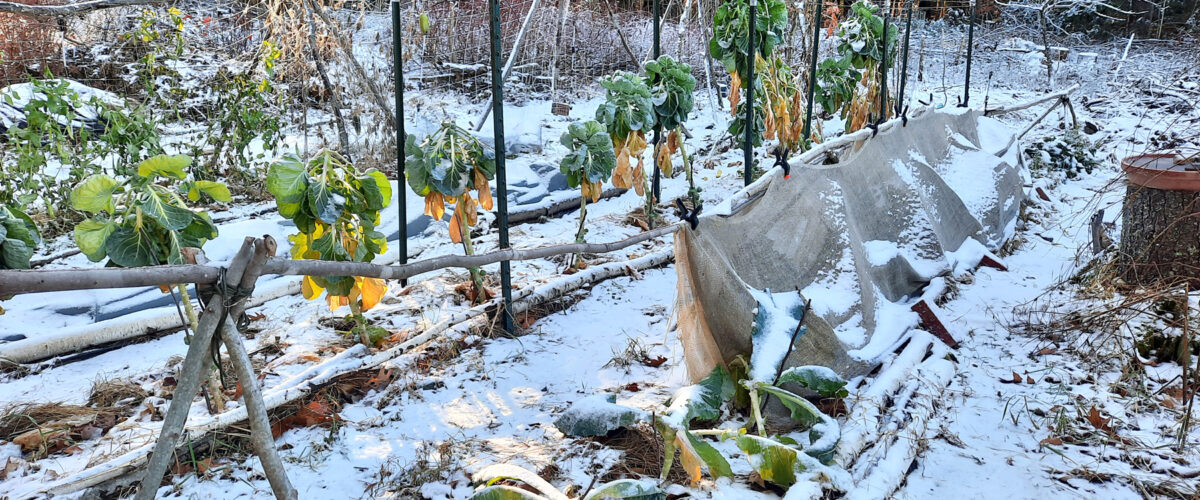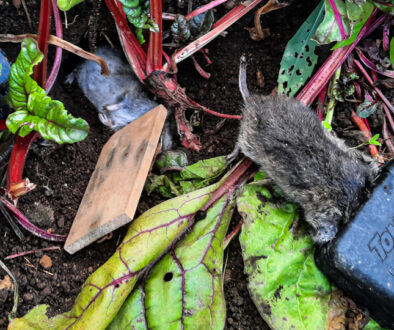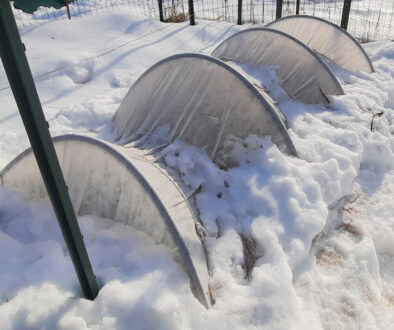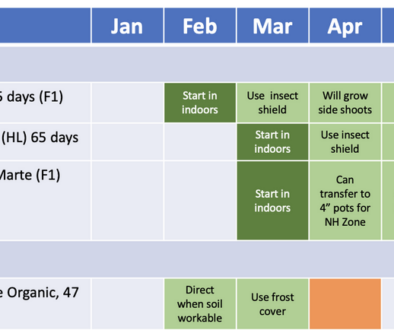November brings in Thanksgiving and the first snow.
I have a lot to be thankful for. As the year ends and we withdraw from the growing season it gives us time to think inwards and review the experiences we had over the past year and in the past in general.
Thanksgiving Harvest
On our menu this year we had potatoes: red maria and Katadin mash-up, butternut, Brussels sprouts (Mart-L) picked fresh from the garden, onions, celery (fresh for the garden) in the stuffing, and, pumpkin pie made from frozen puree. We probably could have had wild turkey if it was turkey season, as there was a group of eight wandering around. Soon we hope that the apple trees will start producing.



